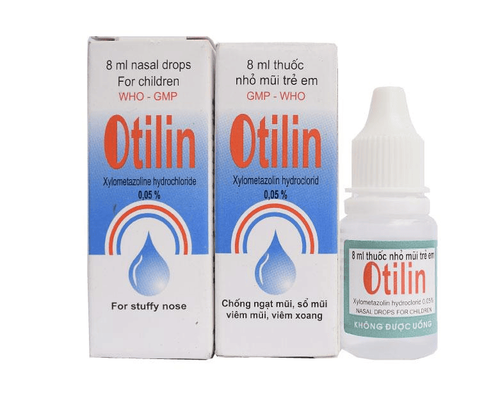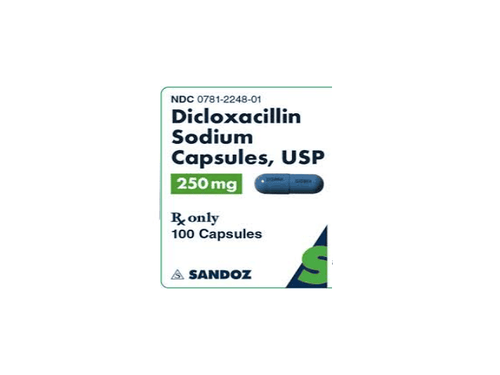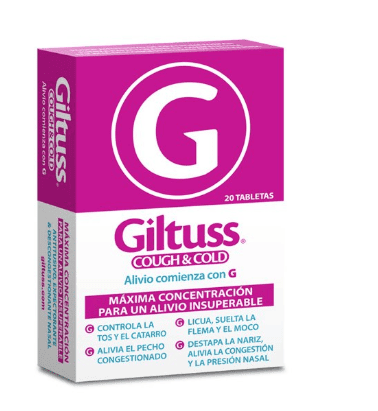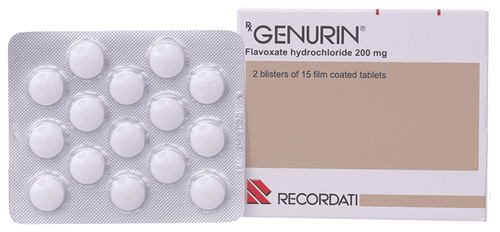This is an automatically translated article.
Kefcin 375 with the main ingredient is Cefaclor used to treat respiratory infections, recurrent tonsillitis, pneumonia... So what does Kefcin 375 do? What points should be considered and noted when taking this drug? The following article will help you better understand the uses of Kefcin 375.
1. What are the uses of Kefcin 375?
Kefcin with the main active ingredient is cefaclor, a second-generation semi-synthetic cephalosporin antibiotic that kills bacteria by inhibiting bacterial cell wall synthesis.
Mild and moderate upper and lower respiratory tract infections caused by susceptible bacteria: acute otitis media, acute sinusitis, pharyngitis, recurrent tonsillitis, acute bronchitis with superinfection, pneumonia, exacerbation of chronic bronchitis. Uncomplicated urinary tract infections caused by susceptible strains of bacteria (including pyelonephritis and cystitis). Skin and soft tissue infections caused by methicillin-susceptible strains of Staphylococcus aureus and susceptible Streptococcus pyogenes. On the other hand, patients who are allergic to the main active ingredient cefaclor, cephalosporin antibiotics or any of the excipients of Kefcin 375 are also not prescribed.
2. Usage of Kefcin 375
2.1. How to use Kefcin 375 Kefcin 375 is very well absorbed after taking on an empty stomach. Food slows the absorption of cefaclor, but the total amount absorbed remains unchanged. Take the medicine with a sufficient amount of filtered water. Do not break, chew or crush, but swallow the whole tablet. Do not mix the drug with any other mixture. Take medications as directed by your doctor 2.2. Dosage of Kefcin 375 Adults:
The usual dose is 1 tablet x 2 times/day. Pharyngitis, bronchitis, tonsillitis, skin and soft tissue infections, lower urinary tract infections: 1 tablet x 2 times/day. For severe infections: 2 tablets x 2 times/day. Maximum dose 4g/day. Dose adjustment is required for patients with severe renal impairment: Creatinine clearance 10 - 50 ml/min, use 50% of the usual dose. Creatinine clearance less than 10 ml/min, use 25% of the usual dose. Elderly: Use the same dose as adults. Children:
Use 20 - 40 mg/kg body weight/ 24 hours, divided into 2-3 doses. Otitis media in children: Give 40 mg/kg body weight/ 24 hours, divided into 2-3 times, but the total daily dose should not exceed 1 g. Safety and effectiveness in infants less than 1 month of age have not been established to date. The maximum daily dose in children should not exceed 1.5g. Treat infections caused by beta-hemolytic streptococci with cefaclor for at least 10 days. Patients requiring regular hemodialysis: Initial dose of 250 mg -1 g before hemodialysis and maintenance dose of 250 - 500 mg every 6 - 8 hours, in between dialysis sessions.
Medicines should try to limit missed doses. If you forget a dose, take it as soon as possible. However, if it is almost time for your next dose, skip the missed dose and take your next dose at the scheduled time. Note that double the prescribed dose should not be taken.
Symptoms of Kefcin 375 overdose that patients may experience such as nausea, vomiting, epigastric pain and diarrhea. Severity of epigastric pain and diarrhea is dose related. If other symptoms are present, it may be due to an allergy or the effect of another intoxication or the patient's existing illness.
Management of overdose should consider the potential for multiple drug overdoses, drug interactions, and unusual pharmacokinetics in the patient. Gastric lavage is not required unless cefaclor has been taken at 5 times the normal dose. Protect the patient's respiratory tract, support ventilation and infusion.
At the same time, reduce drug absorption by giving activated charcoal many times. You can wash the stomach and add activated charcoal or just use activated charcoal. Diuresis, peritoneal dialysis, or hemodialysis have not been established to be beneficial in the treatment of overdose.
3. Note when using Kefcin 375
Use with caution in patients with a history of hypersensitivity to cephalosporins, especially to cefaclor, or to the penicillins. Cefaclor when used for a long time can cause symptoms of pseudomembranous colitis, caution should be used in patients with a history of gastrointestinal disease, especially those with colitis. Renal function should be monitored during long-term treatment with Kefcin 375 or when used with drugs that affect renal function (such as furosemide, aminoglycosides,...). Tests for urinary glucose with reducing agents may be falsely positive. The Coombs test in neonates whose mothers have received Kefcin 375 before delivery or who have cross-reacted prior to blood transfusion may give a positive drug-induced result. Use caution when driving, operating machinery or concentrating. There are no adequate studies with the use of Kefcin 375 in pregnancy. Therefore, Kefcin 375 is indicated in pregnancy only when clearly needed. The concentration of cefaclor in breast milk is very low. The effect of the drug on the nursing infant is not clear, but should pay attention when the child has diarrhea, rash when breastfeeding while using cefaclor. In patients receiving concomitant Kefcin 375 and warfarin, prothrombin time should be monitored and dose adjusted if necessary. Probenecid inhibits serum elimination of cefaclor. Concomitant administration of Kefcin 375 with aminoglycoside antibiotics or furosemide diuretics increases nephrotoxicity.
4. Side effects of the drug Kefcin 375
Common side effects: Measles rash, diarrhea, eosinophilia. Uncommon side effects: Positive direct Coombs test, lymphocytosis, leukopenia, urticaria, genital pruritus, vaginitis, Candida infection. Rare: Anaphylaxis, fever, Stevens-Johnson syndrome, Lyell's syndrome, generalized pustular skin rash, hemolytic anemia.
Please dial HOTLINE for more information or register for an appointment HERE. Download MyVinmec app to make appointments faster and to manage your bookings easily.













